








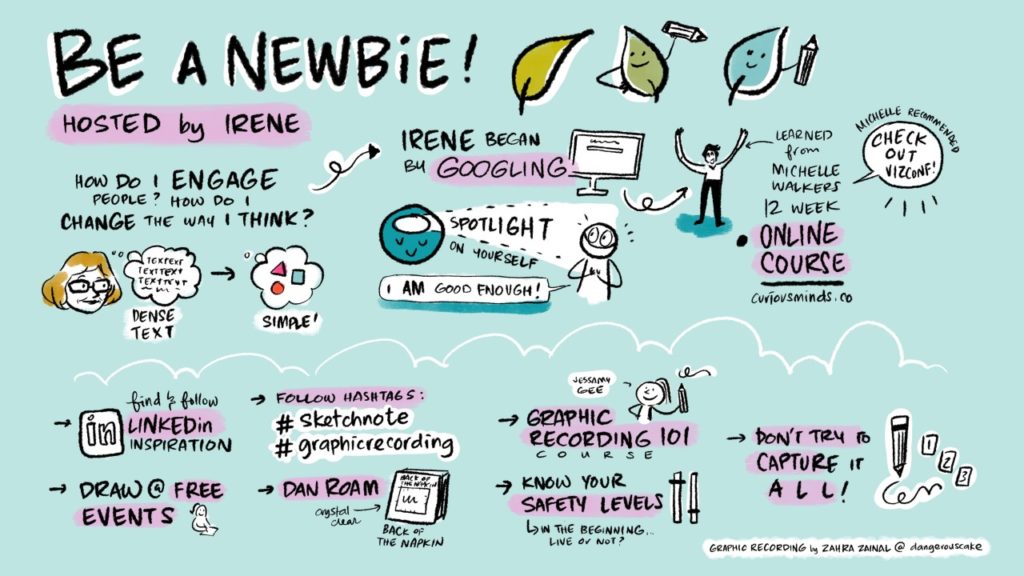
During the VizConf 2019 OpenSpace planning, when participants advertised their sessions and everyone voted for the ones they were interested in, collaboratively creating the daily agenda, a petite woman in her 50s came to the front. She smiled and said she wanted to lead a session on “How to be a newbie”. My heart sunk. I thought that after ‘serious’ topics like “Lettering for Lefties”, “Visualisation in Education”, and “Digital Scribing”, that we already had on the board, no one would want to hear her speak.
How wrong was I. Nearly every hand in the room shot up? “Being a newbie” was one of our most popular sessions that day. We talked about how hard it is to start something new and what resources, tools and tricks one can employ to help visualisation progress.
Plato said, “The beginning is the most important part of the work”. It is also often the hardest.
With the first month of 2020 over, have you begun taking steps towards being a more confident visual practitioner? Whether you are a professional or a complete amateur, becoming better at any aspect of visualisation begins with the single first step.
So, here are just a few “newbie” suggestions to help you start building your
visualisation muscles this year.
And the best bit? You can start making plans for 2020 visually. Grab a piece of paper, a marker and draw your visualisation journey for 2020.
If you need help – join our free video training here or ask for a visual career coaching session with Marcel here.
All you need to do is simply begin, and before you know it, you’ll no longer be a newbie.

The article was written by Natalia Tsygankova. Natalia has always loved words and talking to people. She has put that passion to good use and has been sharing people’s stories in the community radio, TV and print media for the last 10 years. Natalia is also a big fan of true storytelling events and regularly volunteers at the most famous one – The Moth, interviewing the winner. You can hear her own story of moving to Australia from Russia in 1999 here. Natalia believes that everyone has a story – So what’s yours? Contact her today to share your story.


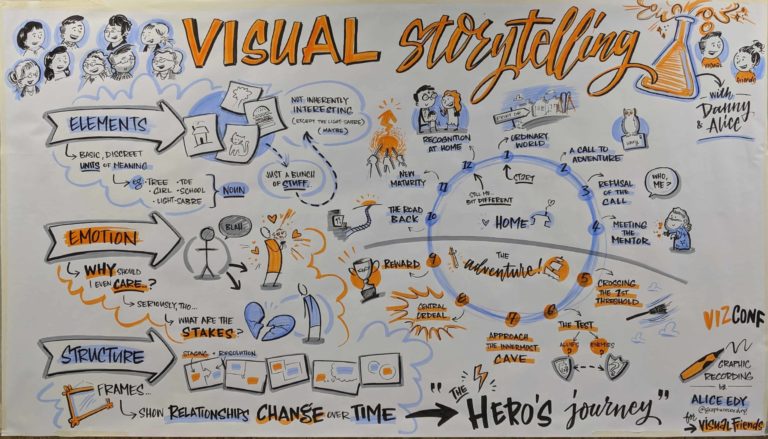
Last weekend my family and I put together the very first furniture items in our new home after moving overseas – an Ikea table and four chairs. After eating on boxes for a week, we couldn’t wait. The four of us, including a 6-year-old, a 10-year-old and two adults in their 40s assembled everything in under an hour using only one allen key and a set of drawings.
If you look around your home, chances are, you’ll spot at least one Ikea item you assembled yourself. Stressful as it can be, (i.e. where the heck does this go??), imagine if you had to deal with a long list of instructions instead of simple drawings.
It’s a well-known fact that most of us prefer to consume information visually. According to the study republished by Forbes, “91% of consumers now prefer visual and interactive content over traditional media.”
But did you also know that people can follow instructions 323% better when visuals are used? That’s because our brain is so much better at dealing with images than text. According to MIT researchers, the human brain is capable of processing an image in as little as 13 milliseconds. The blink of an eye takes about 300 milliseconds.
Though nowadays, visuals alone won’t do the trick anymore. It’s more about what you do with them, which is where visual storytelling comes in.
As overused as this term might seem, it’s not just a buzzword. Using a series of drawings to create a narrative for a specific purpose – to record, to communicate, to engage, to influence – has been around for centuries.
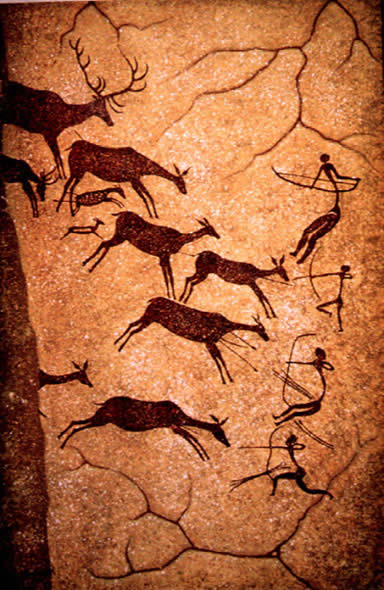

It is still the most powerful way to put ideas into the world today.
Visual storytelling has become a trend for the majority of brands since 2016. Visual narratives with an accent on relevance and emotions are now part of every big brand’s marketing.
In organisations, visual storytelling is increasingly used as a way to support transparency and mutual understanding of systems and processes, for example, development of ‘customer journeys’, large scale ‘strategic visualisations’ and even ‘design thinking’.
Telling curated stories visually through photos, videos, comics and infographics (the most shared content on the web) is currently the most direct way to connect with your customers, your team or your stakeholders.
In a nutshell, visually storytelling seems easy – pick your content, line up visuals and off you go.
But to do it well, to do it effectively, you need to understand the specific storytelling techniques and develop a different set of skills.
That’s why the Global Bikablo Team created the advanced bikablo training covering popular topics like ‘Visual Storytelling’ and “Graphic Scribing’, which began its roll out world-wide in 2020.
During the two days of training the students, who have already learnt the basic visualisation principles during the bikablo fundamentals course, learn how to transform complex subjects into lively picture stories. With the bikablo emotions figures, large-format layout techniques and visual dramatic composition, students are taught to convey necessary messages in a clear, but more emotional and lively way.
Our Brisbane based trainer Danny Low attended the Global bikablo train-the-trainer course last year in Germany and is now the only certified instructor to teach advanced bikablo in Australia and NZ. “The course, with the focus on visual storytelling for business, allows you to take your visual skills to the next level. We teach people the theory behind the visual storytelling, how to create visual hierarchy, the most effective ways to layout and present the content on paper. This is the deep knowledge that has been packaged into a time-effective workshop on the hottest visualisation topics.”
Last year at VizConf, (Australia’s premier and only conference for visual practitioners), we trialled the advanced class with a small group of participants.
Sujith Ramachandra, a Senior Consultant at Radically, and one of our enthusiastic students had an opportunity to attend the session. “The pace of the course, the balance of theory and practice was fantastic and I came out with a lot to think about and a boost of energy and confidence. Visualization with clarity and awareness of the power of storytelling is a game-changer.”
Watch out for the advanced bikablo classes on our website or contact us to arrange an in-house session (if your team has already completed bikablo fundamentals).

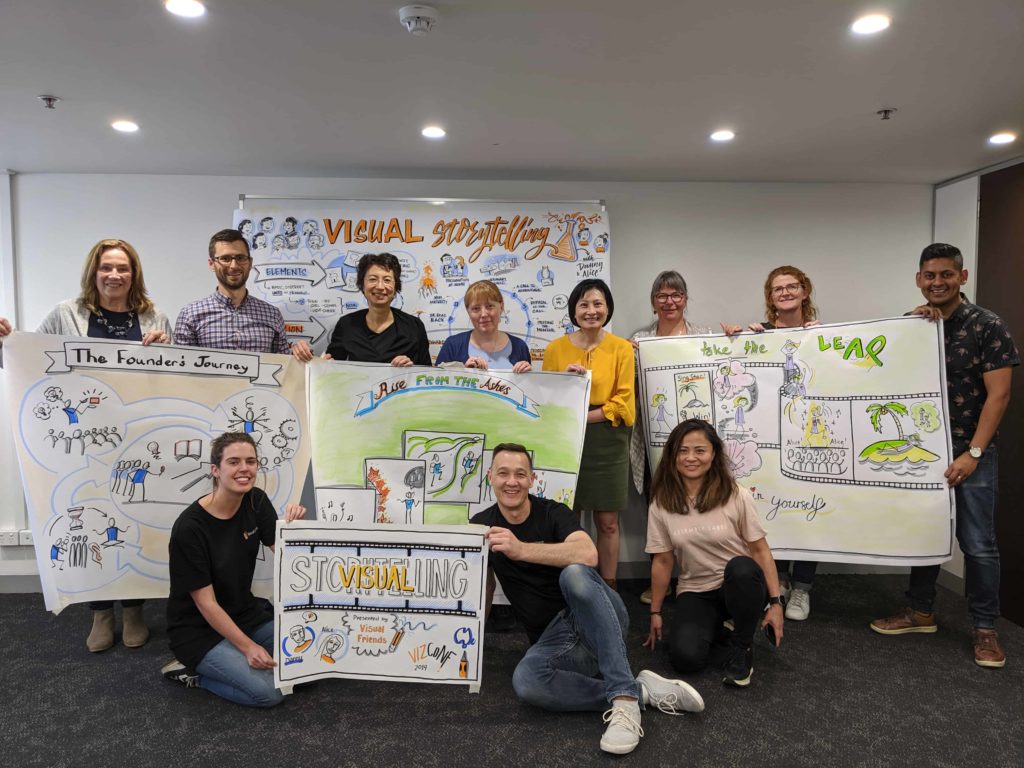

The article was written by Natalia Tsygankova. Natalia has always loved words and talking to people. She has put that passion to good use and has been sharing people’s stories in the community radio, TV and print media for the last 10 years. Natalia is also a big fan of true storytelling events and regularly volunteers at the most famous one – The Moth, interviewing the winner. You can hear her own story of moving to Australia from Russia in 1999 here. Natalia believes that everyone has a story – So what’s yours? Contact her today to share your story.



Primary school teacher and now a part-time graphic scribe
![]() Anyone can learn visualisation. Once you learn basic icons, fill your page and get a grasp on shading, the world is your oyster.
Anyone can learn visualisation. Once you learn basic icons, fill your page and get a grasp on shading, the world is your oyster.
Matt loves his work. “I’ve always been creative and being a primary school teacher provides a creative outlet.”
Now that Matt knows bikablo®, his work has become even more interesting. And not just for Matt but also for his colleagues.
Like many of our students, Matt saw bikablo® in action when someone was scribing at a meeting. Matt always enjoyed taking notes, but this seemed to be next level. Curious, he began researching visualisation skills and came across Visual Friends.
“I saw what people can do, it’s quite inspiring. I thought it would be great to take my knowledge to the next level.”
With the support of his principal, who understood the great benefit of bringing such applicable skill to the school, Matt enrolled in bikablo® fundamentals training.
Teachers can be fussy students, but he found the course really useful. “It was hands on from the word go which is the best way to learn. I learnt to use the space in a smart way and it gave me confidence to work through a page.”
As a teacher, Matt also appreciated the research behind visualisation. “It engages all areas of a learner.” What also appealed was how easy it was to learn this skill and how much you could achieve once you understood the basic principles.
“It’s not that complicated. Once you learn basic icons, fill your page and get a grasp on shading, the world is your oyster. You can then go on and develop your own style.”
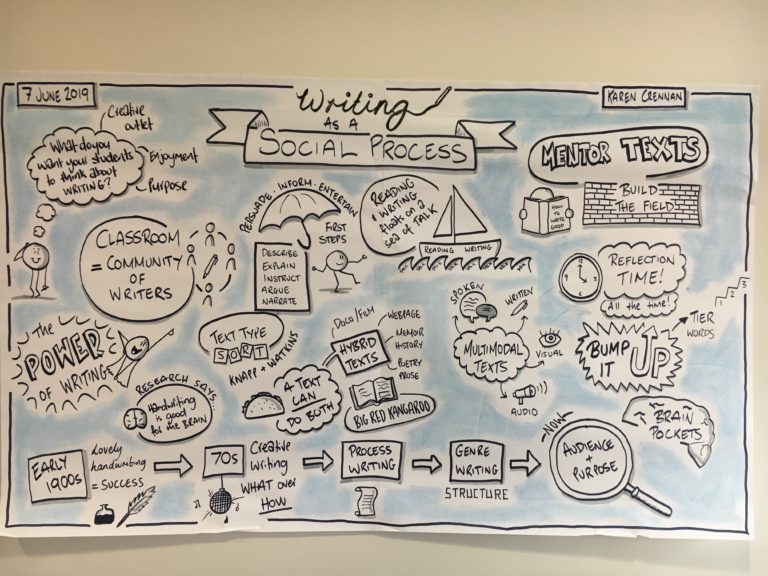

Writing as a Social Process
Matt Handley
Matt feels that’s an important part of learning visualisation or any other subject for that matter – to build on your skills and develop your way of doing things.
“I think the key is to be flexible and just draw things that stand out to you. It’s about making it your own, whether it’s using your own font or your favourite picture. It doesn’t have to be perfect. And of course, the more you practice, the better you get.”
That’s exactly what Matt has been doing.
Since completing the course, he has been giving back to his workplace, creating posters, helping with presentations and meetings. Matt’s three-meter canvas describing school’s self-improvement project journey was displayed at the school library and generated some interesting discussions.
“People have been looking at it and talking about it. Some say they wouldn’t be able to do something like that, but I assure them that with a bit of practice everyone can do it.”
Following his original interest, Matt also took his notetaking to the next level and tried live scribing at school events.
“It was stressful, but it also taught me to focus on the main points instead of trying to capture every word. Those key points are the ones that will trigger people’s memories and will facilitate the conversation.”
Matt is pleased with the feedback he’s received so far. “People comment on how easy it is to read and follow two hours worth of talking on one page.”

Journey of Learning – Matt Handley
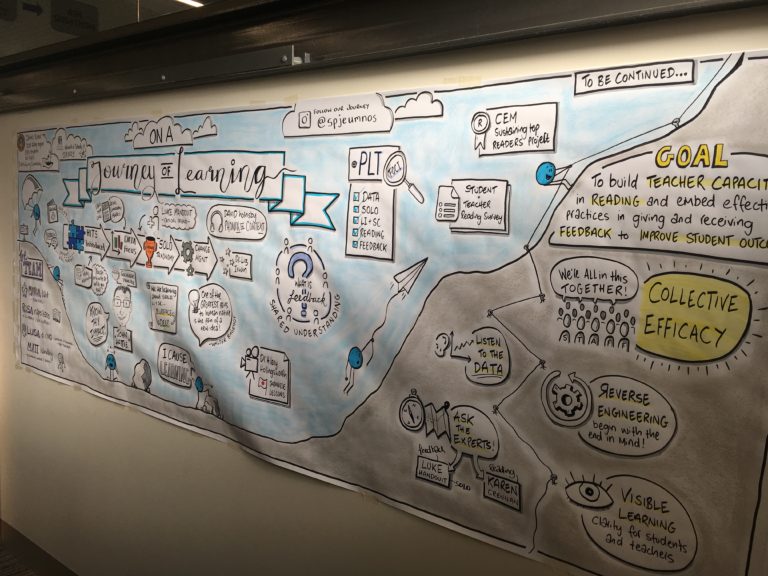
The skills Matt has leant with Visual Friends are definitely making a difference at his workplace. Visualisation is now seeping in the way the school does things.
“In terms of transcribing and professional development, it’s been more than beneficial for our staff and school. Our principal is pleased with how it has turned out.”
Matt is pretty happy too. He has developed a long-term interest in visualisation and added a unique skill to his toolbox that will have a positive effect on his career.
“It’s definitely something I see myself using in the future, wherever my career takes me. It’s a great tool you can share with others.”
P.S. Since we’ve interviewed Matt, he has started his own business working as a graphic scribe in his spare time. You can find him on instagram @_highlyvisual.

The article was written by Natalia Tsygankova. Natalia has always loved words and talking to people. She has put that passion to good use and has been sharing people’s stories in the community radio, TV and print media for the last 10 years. Natalia is also a big fan of true storytelling events and regularly volunteers at the most famous one – The Moth, interviewing the winner. You can hear her own story of moving to Australia from Russia in 1999 here. Natalia believes that everyone has a story – So what’s yours? Contact her today to share your story.


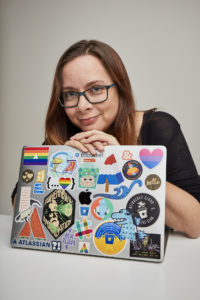
Content Designer Manager | Writer | Technical Communicator at an Australian Global Organisation, Leader in IT Service Desk and Project Management Software
![]() I’m so thankful I have come along to the Visual Friends course, it has really shifted and changed things for me.
I’m so thankful I have come along to the Visual Friends course, it has really shifted and changed things for me.
A hug was not something Linette would have expected going into that meeting. After all, all she did was draw.
But that’s exactly what happened. The team manager was so thrilled at the breakthrough Linette created through her visuals, that she leaped across the room and gave her a big hug.
The product development team of 25 had been working on the project for nine months. There was a lot of conceptual and abstract data that was difficult to wrap up into a neat, mutually exclusive and collectively exhaustive process they were trying to create. The team was stuck. Linette visualised all the elements on paper and immediately everything became clear. Her visuals became the key that unlocked the project puzzle.
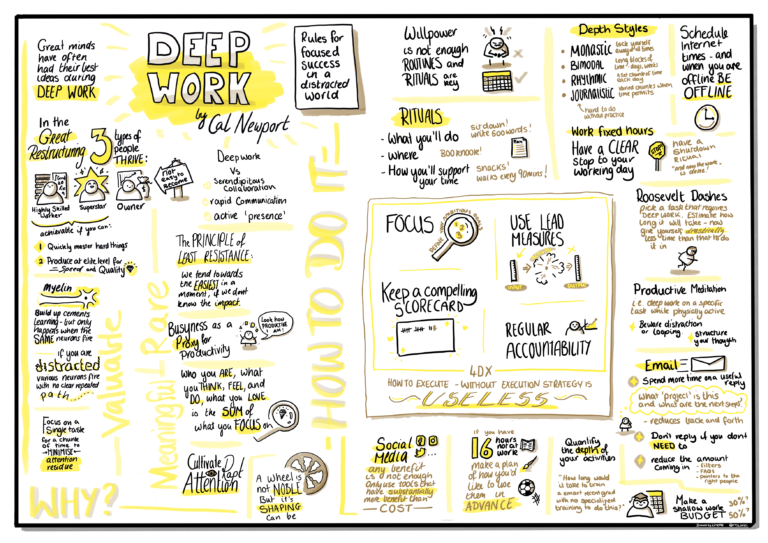

Deep work
by Cal Newport
Funnily enough, Linette never considered herself visual. “I was interested in art and did a bit at school as an elective. But I was discouraged from pursuing it. There was very much a feeling that anything visual was only for people who couldn’t do science. Science was more important.”
After school Linette completed a degree in Industrial Design which further cemented her belief that drawing was not her strength. “Other students were doing these brilliant sketches and my little stick figure next to their 3D rendering would look awful. That confirmed in my mind that I didn’t have great visual skills.”
So for years the only drawing Linette did was doodling while talking on the phone. Until she heard a colleague, Ben Crothers, the author of “Presto Sketching”, give a talk about sketchnoting.
“Wow! I wish I could learn that skill, “ thought Linette. She had seen visual facilitators doing this work and thought it was amazing. A colleague mentioned bikablo. “And I thought, what on Earth does bikablo mean? What is this?”.
A few people recommended the course as a great starting point in the area of visualisation, something really useful, and Linette was in. She persuaded her manager to send her on a course, “but I was wondering, actually, how and if I’d be able to apply it in my day to day life and work.”
Linette did the two-day bikablo fundamentals course in March, 2019 with Danny Low and Marc Hundleby.

Content Design
with Sarah Richard
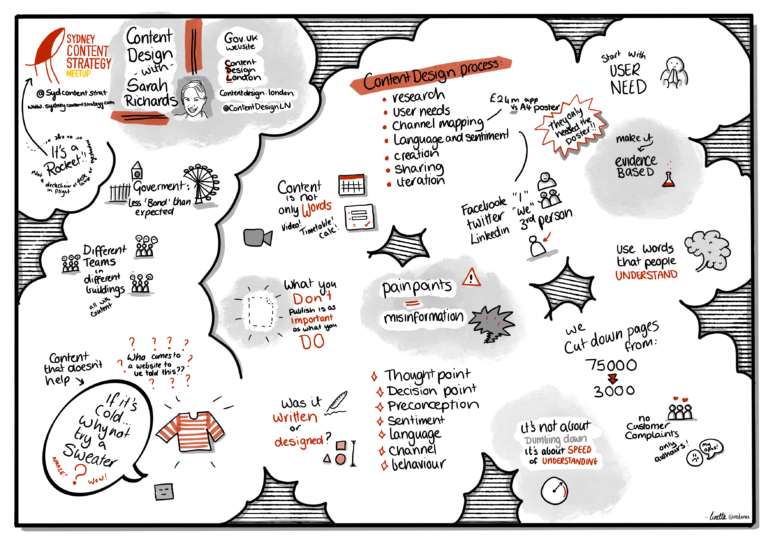
“I found the experience excellent. It was reassuring to see other people in the room saying, “Well, I’m not good at drawing, I find stick figures challenging. It made me feel very safe.”
The step-by-step process allowed Linette to tackle one mini skill at a time without sliding into the familiar mindset of “I can’t draw.”“Going through the steps, each time I thought, yes, I can do this and yes, I can do that too.It was challenging to put up our creations on the walls and, at first, I was scared that my work would be the worst. But I was delighted to see that we all did different things, we interpreted things differently and absolutely everyone had something really impressive. It was amazing to see the skill developing around the room.”
Back at work, initially Linette was apprehensive to use the skills she’d just learnt. She began practising by taking visual notes during meetings without showing it to anyone. Once, at a strategy meeting, she decided to share her visuals with the team, quite pleased with what she had sketched.
“The manager looked and said, “Wow! They are fantastic”, shared them with the product leadership team, got the same excited response and my drawings were published on the strategy internal webpage, for everyone in my area to see. I did have to run away and tidy it up a bit, because it was sketched on lined paper without proper markers.”
From then on, Linette became known as the visual person at work. “People would ask me, “Oh, we are trying to get this idea across, can you draw a thing?” She also began to regularly take visual notes during monthly strategy meetings and they were always very well received. “I feel it’s certainly because of these visuals that people higher up in the organisation knew a bit more about who I was, people who otherwise might have not met me or interacted with me.”
And that’s how Linette ended up in the meeting that we started our story with. “Essentially, all I did was listen to the team and sketched what they were saying. They had all the information but the challenge was communicating all that complex conceptual data visually.”
Unfortunately we can’t share the drawings or the details of the project here, but we can say that thanks to Linette’s drawings helped communicate the process to a lot of people. In addition, visualisation, as a part of the process, was recommended to the next team that was working on a similar project.
Since then Linette has done a few other things. Visual Friends training gave her the courage to enrol and complete a nature illustration course. Practising visualisation by creating visual summaries of non-fiction books led to her being approached by a publisher who saw one such drawing on instagram. It is now going to be used as an illustration in a future book. Linette is also mastering the Apple Pencil and virtual scribing. Her morning ritual during the covid-19 isolation is drawing virtual zoom backgrounds.

Unf*ck your boundaries
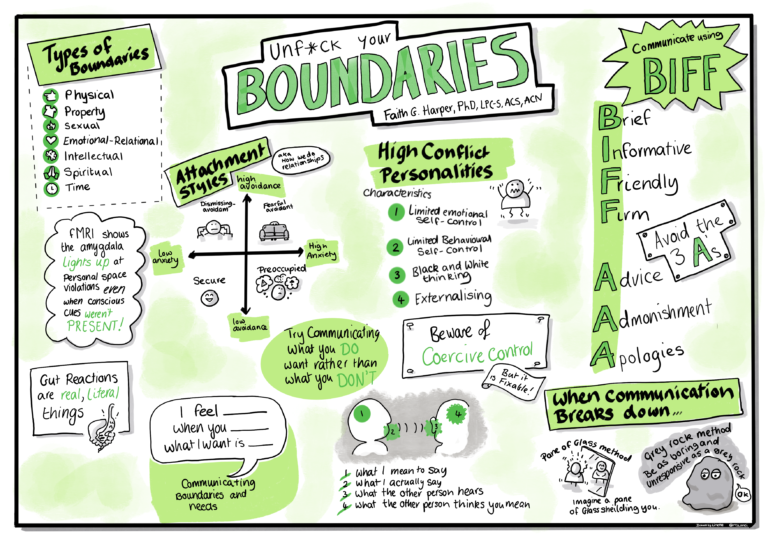
I found that training with Visual Friends helped me unlock my creativity. I genuinely think that I would not have had the confidence to do all that, had it not been for doing the bikablo course.” But the highlight so far is still that first strategy meeting, when Linette’s notes were used as a visual for the whole product strategy.
“Even now people refer back to that illustration to explain our focus and goals. That was the moment when I switched from feeling like my notes were a creative ‘indulgence’ to seeing how much they could help others.
I”m so thankful I have come along to the Visual Friends course, it has really shifted and changed things for me.”
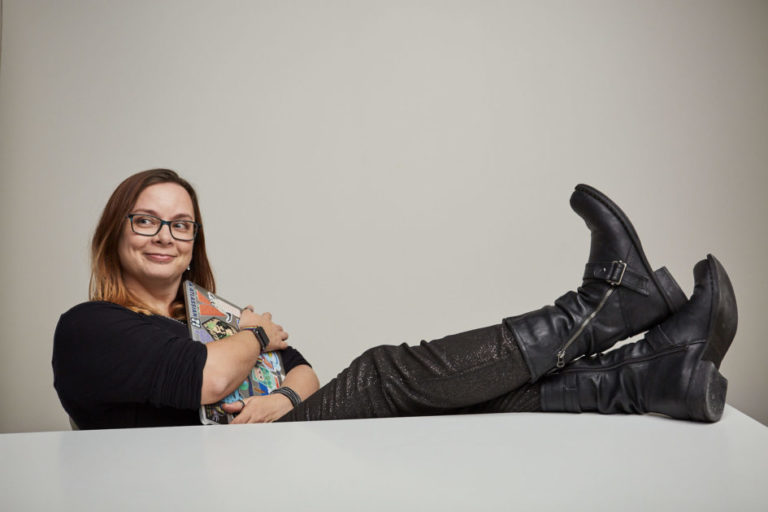


The article was written by Natalia Tsygankova. Natalia has always loved words and talking to people. She has put that passion to good use and has been sharing people’s stories in the community radio, TV and print media for the last 10 years. Natalia is also a big fan of true storytelling events and regularly volunteers at the most famous one – The Moth, interviewing the winner. You can hear her own story of moving to Australia from Russia in 1999 here. Natalia believes that everyone has a story – So what’s yours? Contact her today to share your story.

